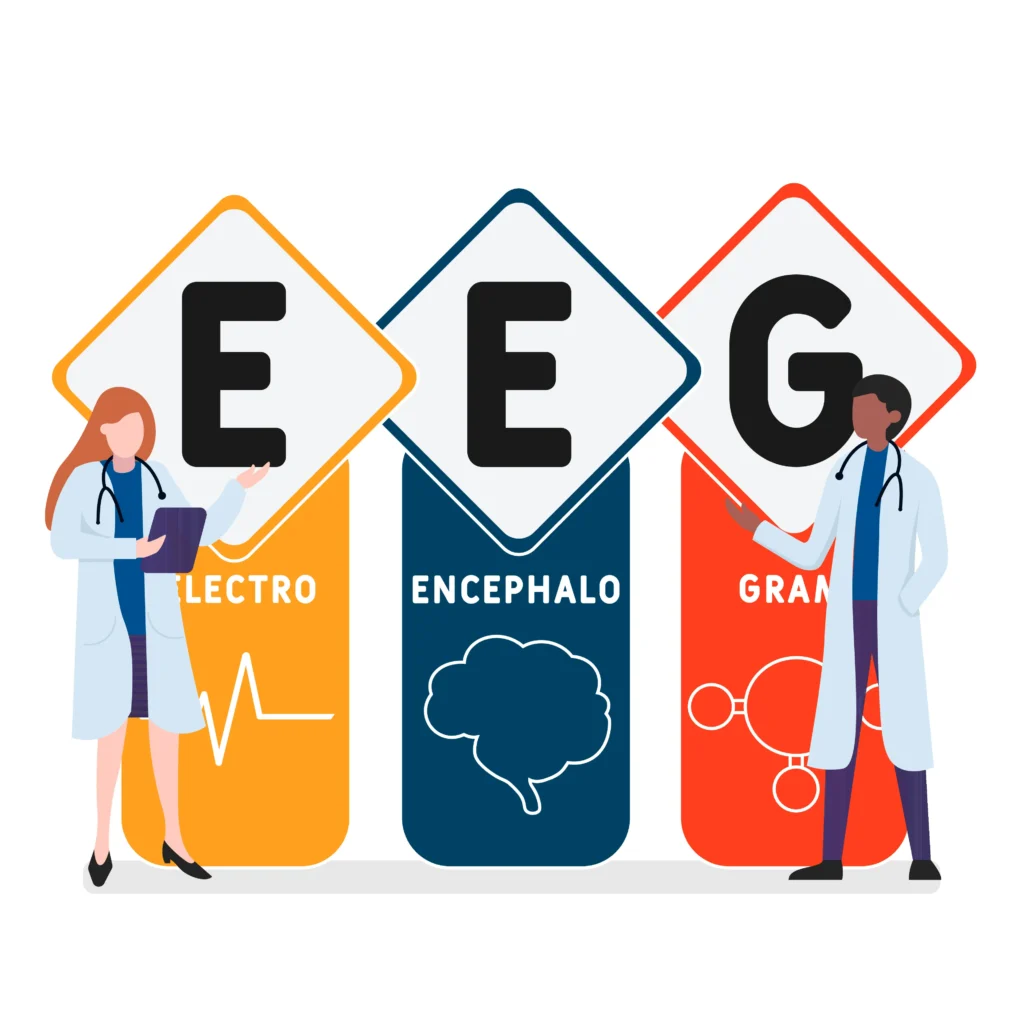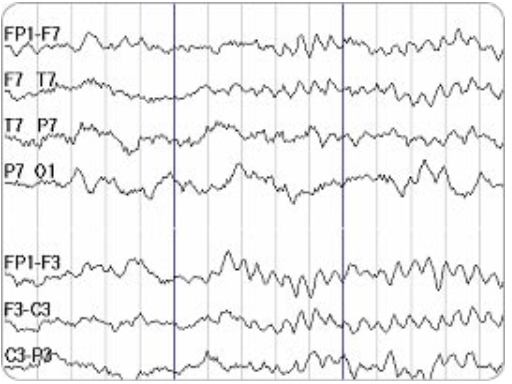Electroencephalogram (EEG)

What is an electroencephalogram (EEG)?
Electrodes are attached to your child’s scalp that measure the pattern of electrical activity in different areas of the brain. These patterns are represented by wavy lines that help the doctor determine where the abnormal brain activity is occurring.
Cells in the brain use low levels of electricity to communicate with each other. An electroencephalogram (EEG) measures this electricity over time. The brain’s electrical activity shows up as wavy lines on a computer monitor. Doctors read the wavy lines to find out how well the brain is working.
Reasons to have an EEG
Doctors use the EEG to locate problems in the brain. For example, an EEG can show where convulsions or seizures start. The electrical pattern changes when there is a problem. The change in pattern shows up as a change in the wavy lines on the computer screen. This shows where in the brain the problem is. The doctor can then decide on the best treatment.
How to get your child ready for an EEG
Wash your child’s hair before you bring him to the hospital. You should check for lice when you wash your child’s hair. If there are any signs of lice, please tell the nurse at the lab. Please do not use conditioner or gel on your child’s hair.
Sedation
If your child cannot lie still for the test, he may need to take a mild sedative. A sedative is a medicine that will calm your child so he can lie still. The most common sedatives are chloral hydrate and pentobarbital sodium.
If your child needs a sedative, he must stop eating solid food 8 hours before the test; stop drinking milk, formula or liquids 6 hours before the test; and stop breastfeeding 4 hours before the test. If you are unsure about whether your child needs a sedative or if you are unsure when to stop your child from eating and drinking, ask the nurse at the lab the day before the test is scheduled.
During an EEG

An EEG takes about an hour. It does not hurt.
EEG tests are usually done at a hospital. They are done by an EEG technologist, a person who is specially trained. Usually, children lie on a bed during an EEG. Sometimes, children sit down during an EEG. Parents are usually allowed to stay with their child while the test is done.
Your child’s head will be measured and marked with a wax pencil so that the EEG technologist knows where to put the small metal circles called electrodes. The marked areas on your child’s head will be cleaned with a gel, which is a thick soap. Then electrodes will be put on your child’s head with cream and gauze. The electrodes are hooked up to the computer.
The computer records the patterns of electricity of your child’s brain. The EEG machine makes a continuous record of your child’s brain activity which can be seen on a computer screen.
During the test, the technologist may ask your child to:
Breathe deeply for three minutes.
Open and close his eyes.
Watch a flashing bright light for a few minutes.
These exercises are done to stimulate certain types of brain activity. As this brain activity changes, so do the electrical patterns. How these patterns change during the different activities can help doctors find out more about how the brain works.
Asleep and awake
Your child may have the test while he is asleep and again while he is awake. This may show the differences in the brain when your child is awake and asleep.
Side effects from EEG
If your child did not have a sedative, he will have no side effects, or problems, from the EEG.
If your child had a sedative, he might be sleepy and unsteady for four to six hours. Please check on your child carefully for about six hours after the test. Give your child only small sips of clear liquids such as water or apple juice. Your child can have a regular meal if he feels like eating. When your child is fully awake, he can return to his usual activities.
Your child’s hair may be a little sticky from the cream. You can easily wash out the cream with shampoo.
Key points
An EEG is a test that looks at patterns of electricity in the brain.
Children have EEGs if doctors think there might be a problem with the brain.
An EEG takes about an hour.
Children might be sedated for the test if they cannot lie still.

